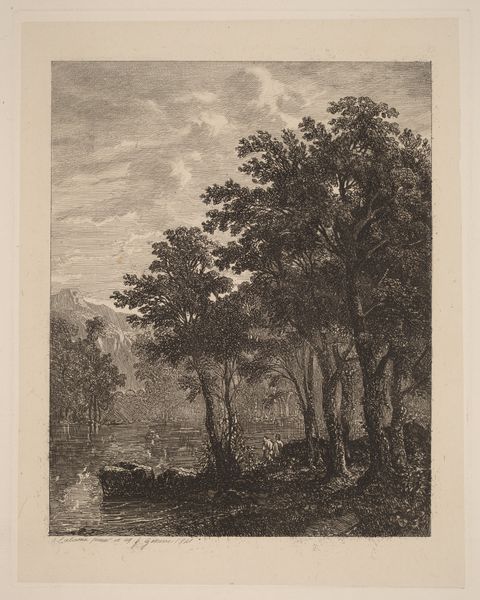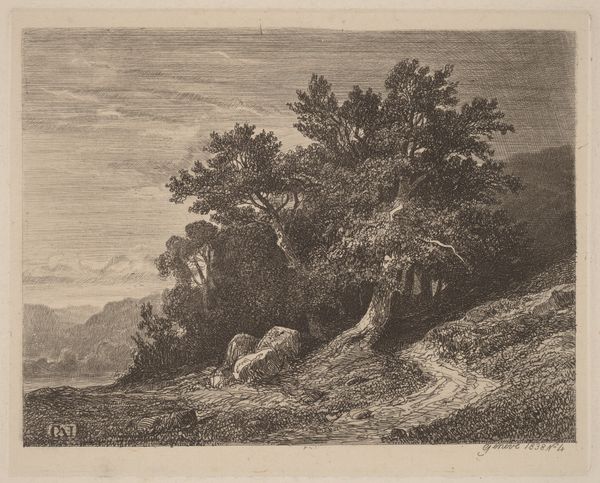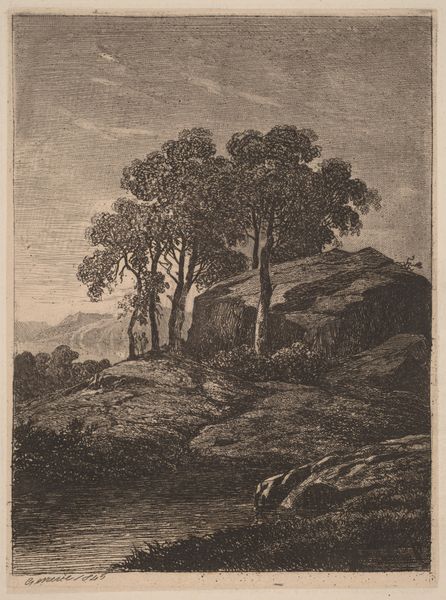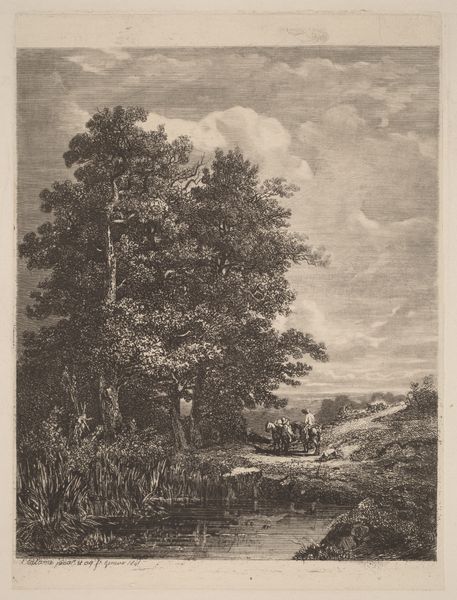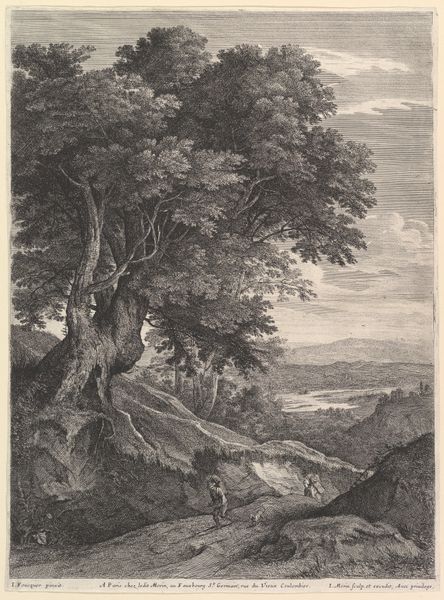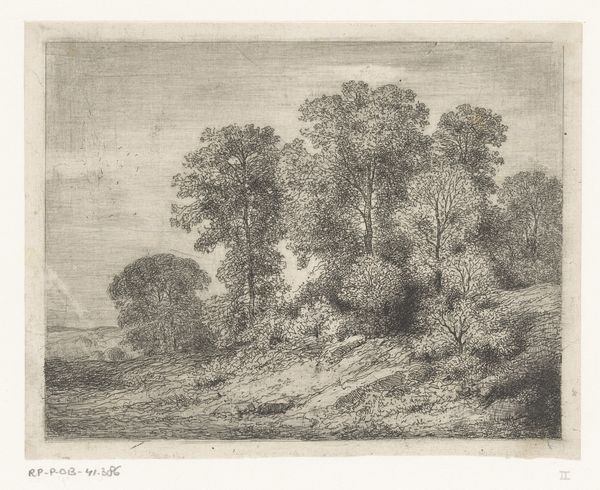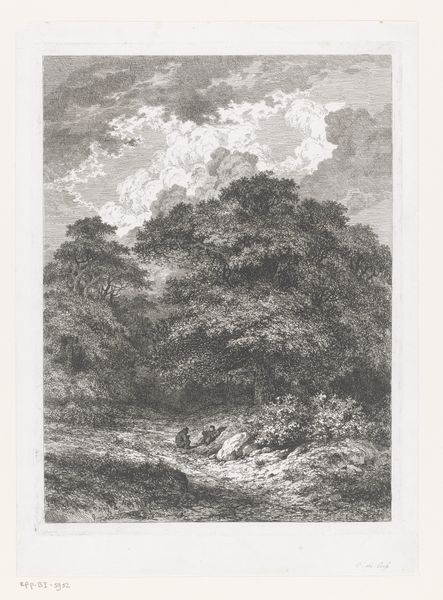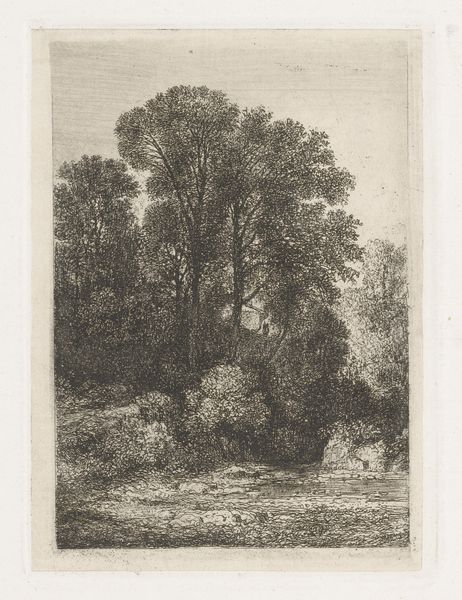
drawing, print, etching, paper
#
drawing
# print
#
etching
#
landscape
#
paper
#
form
#
romanticism
#
line
#
realism
Dimensions: plate: 19 x 13.7 cm (7 1/2 x 5 3/8 in.) sheet: 35.2 x 27.2 cm (13 7/8 x 10 11/16 in.)
Copyright: National Gallery of Art: CC0 1.0
This is an etching of a "Grove of Trees" by Alexandre Calame, a Swiss artist from the 19th century. He was known for his dramatic landscapes, which tapped into the Romantic era's fascination with nature. Calame's work reflects a period of growing national identity in Switzerland, with nature acting as a symbol of freedom and purity. The grove of trees, rendered with meticulous detail, evokes the sublime power of nature and its spiritual resonance. Consider the cultural context of Switzerland in the 1800s. The country was in the process of solidifying its identity. Artists like Calame were central in shaping a sense of national pride through the visual representation of the Swiss landscape. By examining historical documents, letters, and critical reviews, we can begin to understand how Calame’s art played a crucial role in constructing and celebrating Swiss national identity during a time of significant social and political change.
Comments
No comments
Be the first to comment and join the conversation on the ultimate creative platform.
